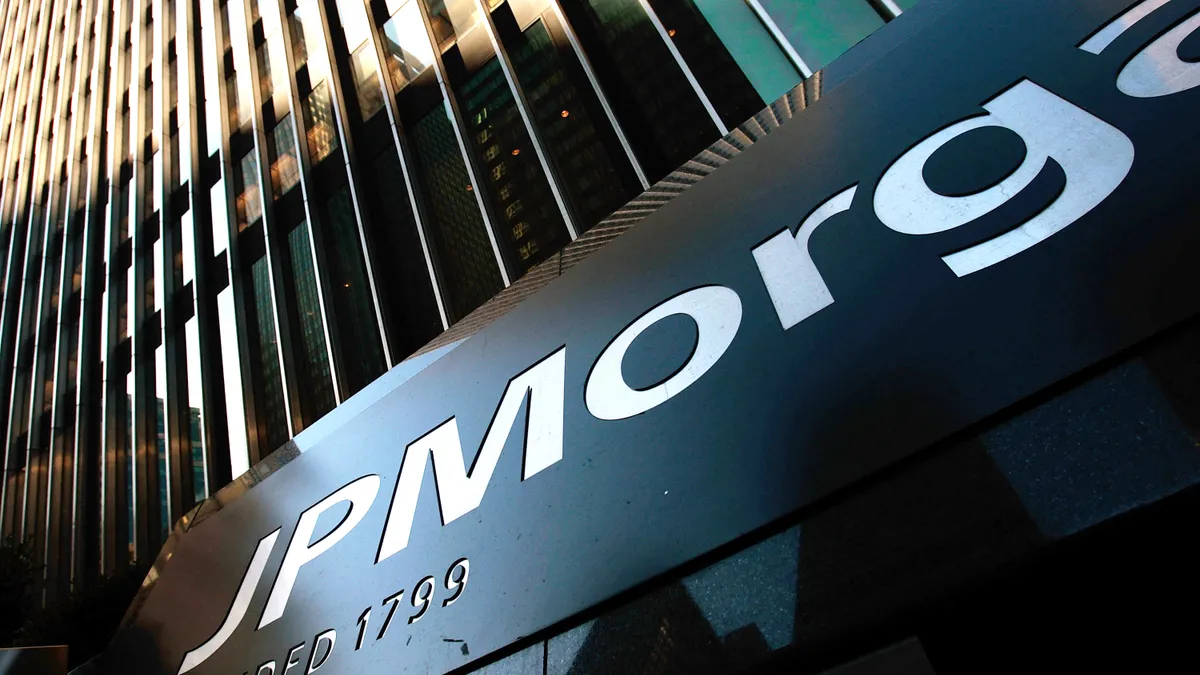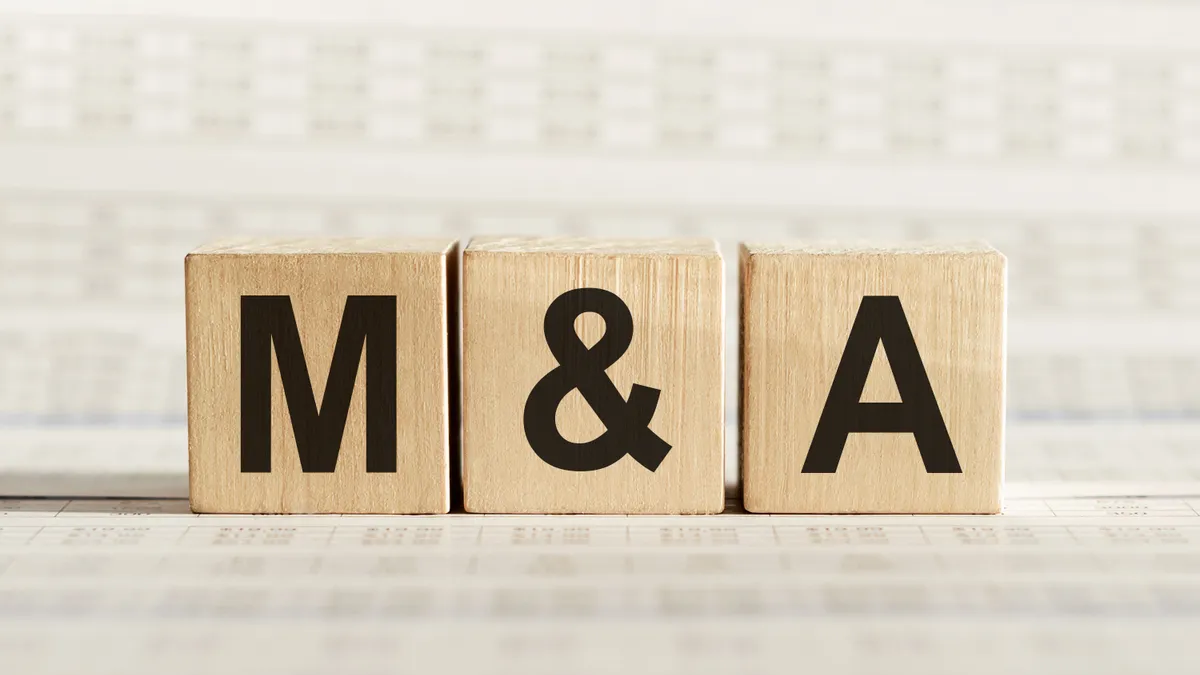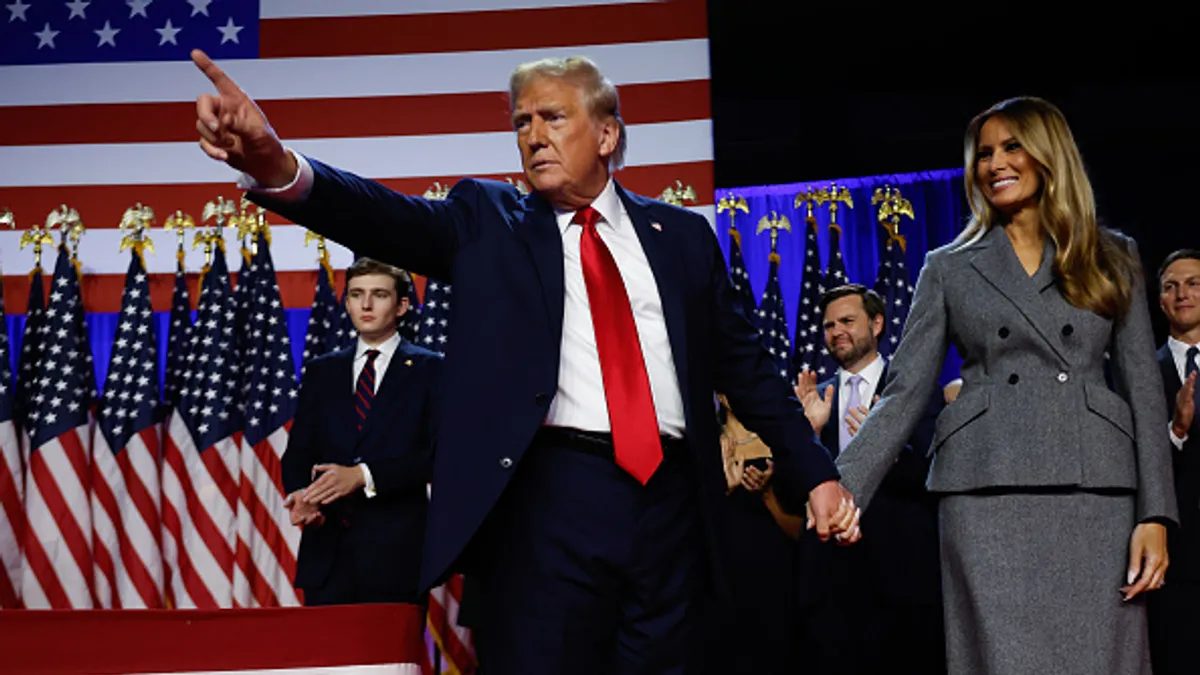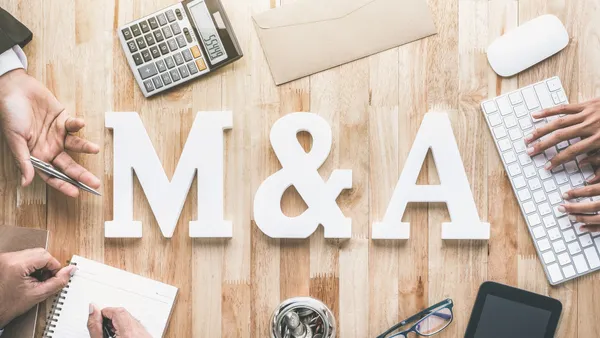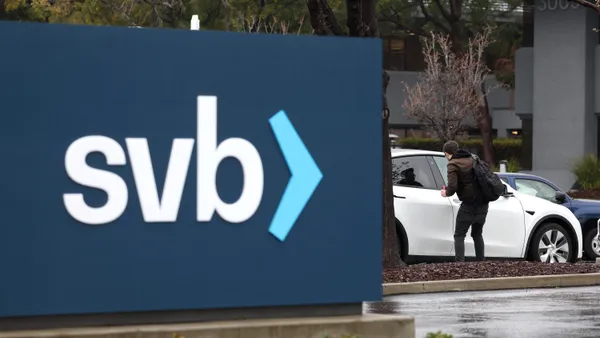UPDATE: April 27, 2021: JPMorgan Chase said it's opening its U.S. offices to all employees May 17 — while adhering to a 50% occupancy cap — "so [they] can get comfortable with being back in an office environment," according to a memo written by the bank's operating committee and published Tuesday by CNBC.
The committee said it would expect all U.S.-based employees to be in the office on a consistent rotational schedule by early July, also subject to the 50% cap.
“With this timeframe in mind you should start making any needed arrangements to help with your successful return,” the committee said. "We know that many of you are excited to come back, but we also know that for some, the idea of coming in on a regular basis is a change through which you’ll need to manage."
Dive Brief:
- JPMorgan Chase CEO Jamie Dimon plans for half of the bank’s corporate employees to be working from the office by September and maskless there by October, he told wealth-management clients Wednesday in a webinar, according to Business Insider.
- About 30% of the bank’s employees would work under a hybrid model once the pandemic subsides, Dimon said. That could include traveling and occasional work from home. At that point, Dimon said, he expects about 65% of his corporate workforce and all of his branch-based employees to be working from the office, the publication reported.
- The comments come a day after the bank said it was hiring more help to counteract potential junior banker burnout. JPMorgan has onboarded 65 analysts and 22 associates — and plans to add 100 junior bankers and support staff, Jim Casey, the bank’s co-head of investment banking, told The New York Times.
Dive Insight:
The return timeline Dimon floated Wednesday matches the expectations of his rivals, even if his tone read more aggressive — even cynical.
"A lot of people say, 'I'm not going to go back to work.' Look at their Instagrams," Dimon said Wednesday, according to Business Insider. "They didn't get sick from coming into the office. They got sick partying.”
Dimon has long been hawkish on office returns, repeating in Wednesday’s webinar that he has been working from the office since June and adding that corporate America may be "overdoing it a bit" in its reluctance to return, in contrast with the likes of firefighters, sanitation workers and retailers who have been working together in person through much of the COVID-19 crisis.
"It has to work for the company and the clients," Dimon said Wednesday of the future work schedule. "You'll be asked to come in when your team is there. You'll ask your team to come in. It can't be 'everybody does what they want' because it's so inefficient."
Dimon is no stranger to speaking off the cuff. When asked at a December conference which segment of his bank's business would benefit from an acquisition, Dimon said, "Asset management, my line is open. ... If you've got brilliant ideas, give me a call. And if you're a competitor investment bank and you bring the idea, you get the fee."
On Wednesday, Dimon acknowledged his bank is "nudging" employees to plan for office returns, adding he couldn't legally require his workforce to get the coronavirus vaccine but that the bank may someday if it's permitted.
Fellow bank executives have been gentler in tone regarding office returns — perhaps polished through corporate communications, as opposed to the lesser filter of virtual meetings.
"We are encouraged by the significant increase in vaccination availability and have started to plan for a return to a more normal operating model in September, soon after the Labor Day holiday in the U.S.," Wells Fargo CEO Charlie Scharf and Chief Operating Officer Scott Powell wrote last month.
Despite the contrast in tone, Dimon’s target return date is no more aggressive than that of Wells or Bank of America, which last month said it planned for its 1,800 graduate hires to be in the office by October.
Dimon is not alone among bank CEOs expressing impatience at the pace of office returns. Goldman Sachs CEO David Solomon in February called continued remote work "an aberration" and, like JPMorgan, is using summer internships as a catalyst to return. "Getting them in to the office is the best way to get them connected to Goldman Sachs," Solomon told employees over Zoom in March.
A renewed spike in COVID-19 cases short-circuited planned returns last fall for JPMorgan and Goldman Sachs. Both banks sent New York-based traders home after employees at their Manhattan office buildings tested positive for the virus.
In-person internships are less of a concern at Bank of America, which committed to making them virtual again this summer. Deutsche Bank, meanwhile, struck a middle ground, letting its U.S. interns choose whether to make their program fully virtual or hybrid — in which they would work from the office three days a week, according to an email seen by Bloomberg. Interns have until Monday to decide, the wire service reported.
Meanwhile, JPMorgan on Tuesday revealed its plan to counteract potential turnover among junior bankers — a narrative that has garnered attention since a survey of a handful of Goldman Sachs analysts went viral last month, detailing 100-hour workweeks, grueling expectations and deteriorating mental and physical health.
For its 100 planned hires, the bank is looking to poach from its rivals and to target lawyers and accountants who may be in the market for a career change, The New York Times reported.
JPMorgan bolstered its time-focused policies, too — announcing it would encourage all bankers to leave the office by 7 p.m. on weekdays and enforce a minimum of three weeks of vacation per year. Additionally, junior bankers’ hours and feedback will factor into senior managers’ performance evaluations and compensation, according to the Times.
The nation’s largest bank had laid out a policy in 2016 to safeguard junior bankers’ hours, but "it wasn’t stringently enforced," Casey said.
In recent weeks, Bank of America and Wells Fargo announced plans to give analysts additional bonuses of $10,000 while associates would get more.
Citi, meanwhile, is emphasizing flexibility after the COVID-19 pandemic subsides, saying employees can expect to work a hybrid schedule that includes at least three days a week from the office and as many as two days remote.



